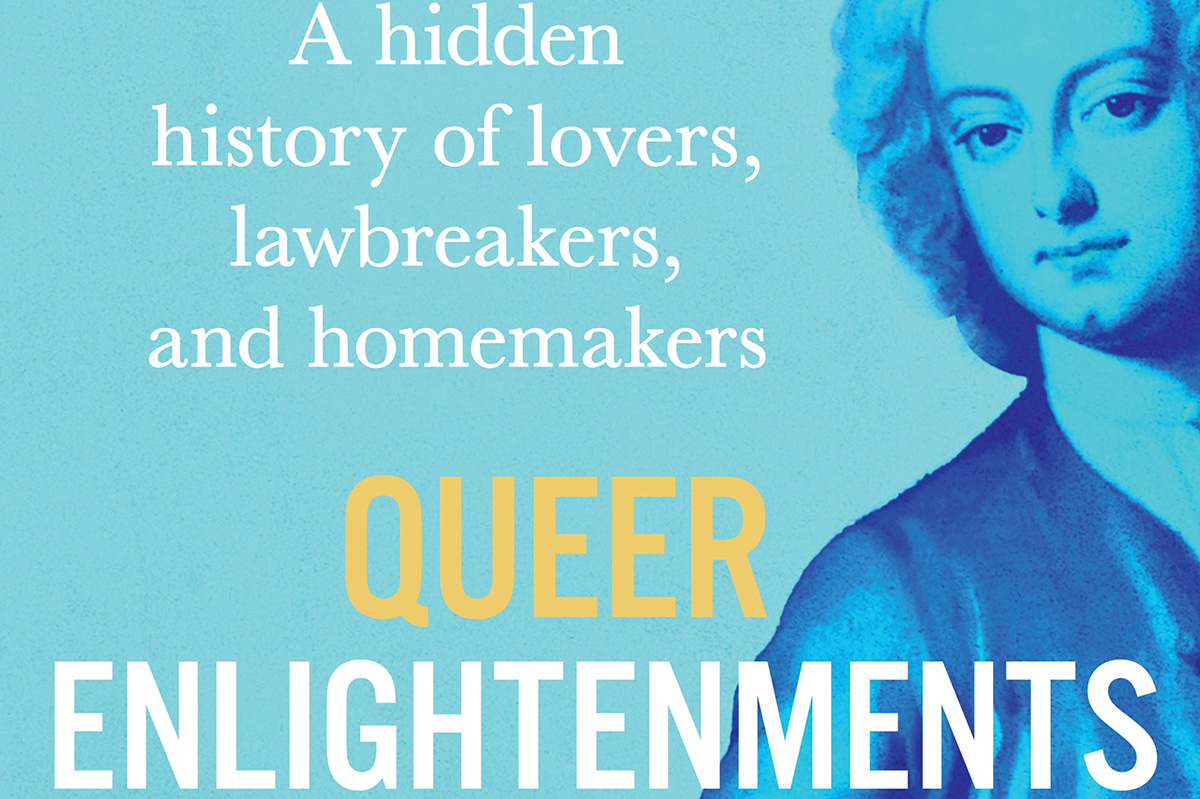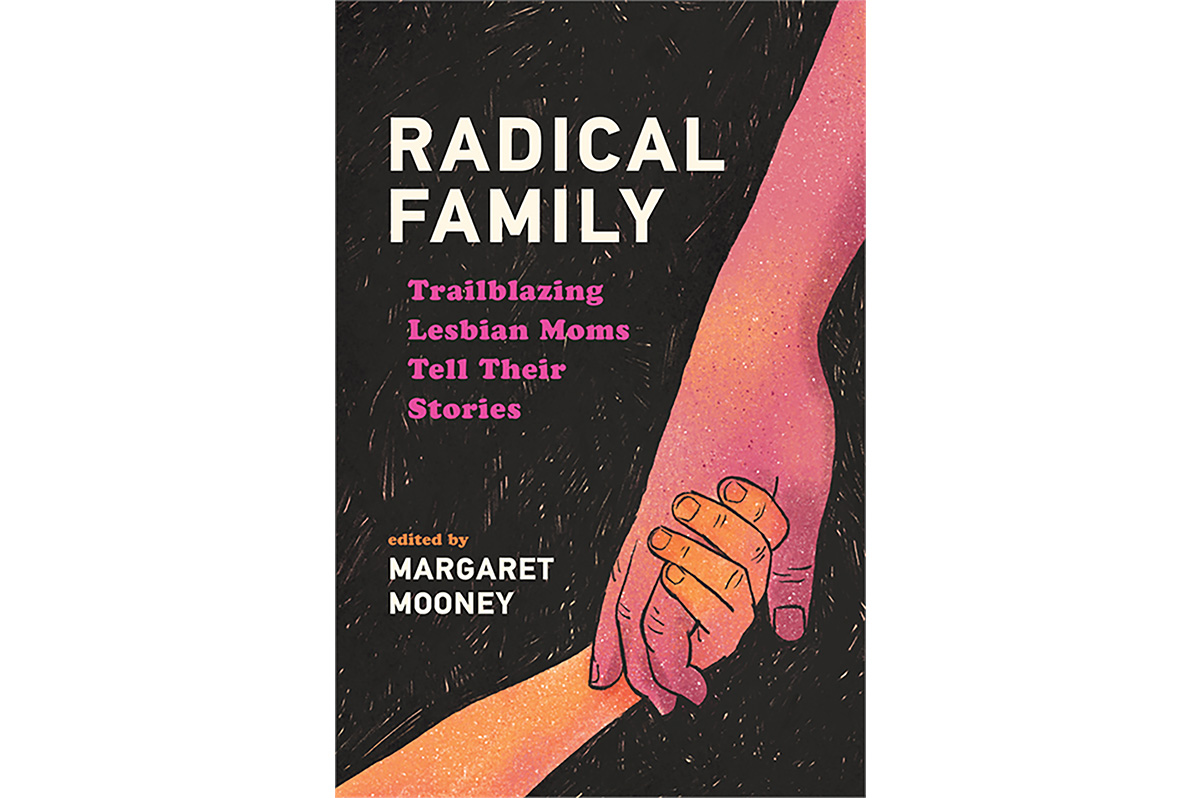Books
‘Call Me By Your Name’ sequel ‘Find Me’ evocative but lacks original’s power
Aciman keeps readers waiting masochistically while introducing new characters


Unusually close father fixations, intense longing, the first flush of new romance that’s as scary as it is exciting, oh — and pretty much everybody here is bi. These are the major themes of “Find Me,” the sequel to “Call Me By Your Name.” Out Oct. 29, it continues the stories of the same-sex lovers Elio and Oliver that Andre Aciman introduced in his 2007 novel, memorably adapted into a 2017 movie with Timothee Chalamet and Armie Hammer.
I’m gonna stay pretty vague here and keep this as spoiler free as possible. If you want more on setting and premise, that’s easily available online. I went into this 100 percent blind and found the experience quite satisfying. “Call Me” director Luca Guadagino has said he’s planning a sequel of his own that would pick up a few years after the film (the book had an episodic final third not depicted in the movie) with Elio and Oliver navigating through the AIDS era. “Find Me” eschews that scenario altogether.
“Find Me” (**1/2 out of four) really takes its time gathering steam. I can’t necessarily say that’s a bad thing — one of “Call Me’s” biggest charms (in both book and film form) was its unusually languid pace, which so deftly captured the feel of a lazy Italian summer in which Elio and Oliver discovered each other. The pacing, though, worked much better in the earlier book as it was more suited to the timeline of the story. For Aciman to take his same good, ole’ time covering — as in the book’s first section — just a few days’ time, often feels laborious.
Not helping matters is how suddenly he’ll speed things up at whim. One particular same-sex romance in the middle section of the book dubbed “Cadenza” starts off with Aciman’s trademark detail in which no thought or action is deemed too fleeting or throwaway to not share. We’re treated to passages like: “… and then he asked if he could shampoo my hair, to which I said of course he could, and while the shampoo sat on my hair after he’d rubbed it in, I heard him wash himself, only then to feel his fingers rubbing and prodding my skull time and time again.”
That’s all fine and good — sensory detail can be powerful — but then just a few pages later: “Thursday that week we met again at nine at the same restaurant. Friday for lunch. And then for dinner as well. After breakfast that Saturday, he said he was going to drive to the country …” It’s such an extreme pick up of the pacing you almost feel literary whiplash.
Musical motifs form the book’s four sections — Tempo, Cadenza, Capriccio and Da Capo. Told in first person, it takes awhile in each section to figure out who’s speaking and where we are. And be ready to wait. I mean, really wait. Elio is first mentioned by name on page 107; Oliver is alluded to first on page 139. We first see his name on page 233.
As one plods through this leisurely pace, it’s always in the back of the mind whether or not Aciman will deliver a satisfying enough finale to have justified his long roundabouts. That’s, of course, up to each reader to decide, but I would have preferred not spending so much time in the lives and passions of new characters like Miranda (who figures heavily in Tempo, the longest section at a whopping 117 pages) and Michel, a central figure in “Cadenza.”
I was, at first, grateful to have been spared equally detailed prose about Micol, Oliver’s wife of many years, and how they ended up together. And yet, in retrospect, it would have yielded a bit more insight into Oliver, the more inscrutable of the central couple in “Call Me.” He ends up feeling like an afterthought here. Yes, we do get inside his head a bit in Capriccio and Da Capo, but it feels underdeveloped. In Cadenza, Aciman spends dozens of pages detailing Elio (a pianist) cracking a musical mystery (he’s given a handwritten score of murky origins). It’s mildly involving and ends up having some poignance, but ultimately factors — as is common with these types of red herring plot devices — way less in the grand scheme of the story than you’d think considering the attention it gets.
Aciman’s biggest failure here is his inability to differentiate his characters enough as they navigate the throes and blushes of new love. Told always in first person, they narrate things like, “we were staring at each other, and yet neither of us was saying anything. I knew that if I uttered another word I would break the spell, so we sat there, silent and staring, silent and staring, as if she too did not want to lift the spell.” By the end of the book, we’ve been treated to three rounds of this sort of thing from three different perspectives but the voices aren’t distinct enough to justify such poring over these mini-moments.
One might argue that’s the point — Aciman is noting how similar these mating rituals, this flirting is across the board, male or female, gay (more like bi) or straight. But he introduces, then tosses aside so cavalierly such major characters in his story while making us wait, almost masochistically, to discover the fate of Elio and Oliver, it ends up feeling more like a long trip around Robin Hood’s barn than the insightful dissection of human emotion he clearly intends it to be.
In fairness, do these things ever really work? One thinks, of course, of everything from the recent “The Testaments” (the sequel to “The Handmaid’s Tale”) to “Go Set a Watchman” (sequel to “To Kill a Mockingbird”). Are these projects ever terribly satisfying? What would that even look like in Elio and Oliver’s world? Do we want them together setting up house with a white picket fence? We’d hate him if he’d killed one of them off. What does one do with this conundrum?
Aciman has made a noble effort and the book is engrossing, even at his pace, which is actually saying something. But ultimately too much time is spent on rabbit trails with the goods way too rushed over in the final section (Da Capo is a mere 13 pages) to prove effective, much less as shatteringly evocative as “Call Me.”
Books
Pioneering gay journalist takes on Trump 2.0 in new book
Nick Benton’s essays appeared in Fall Church News-Press

Nicholas Benton is a well-known local LGBTQ advocate and journalist and the longtime owner and editor of the Falls Church News-Press, a weekly newspaper.
In his eighth book out now, Benton offers a new set of remarkable essays all crafted in the first eight months of Trump 2.0 and its wholesale effort at dismantling democracy and the rule of law. Most were published in the Falls Church News-Press, but he adds a new piece to this volume, as an addendum to his “Cult Century” series, revealing for the first time his experiences from decades ago in the political cult of Lyndon LaRouche, aimed at providing a clearer grasp of today’s Cult of Trump.
His “Please Don’t Eat Your Children” set takes off from the satire of Jonathan Swift to explore society’s critical role of drumming creativity out of the young.

Below is an excerpt from “Please Don’t Eat Your Children, Cult Century, and other 2025 Essays.”
Please Don’t Eat Your Children
In his famous short essay, “A Modest Proposal: For Preventing the Children of Poor People in Ireland From Being a Burden to Their Parents or Country and for Making Them Beneficial to the Public,” author and Anglican priest Jonathan Swift (1667-1745) uses cutting satire to suggest that cannibalism of the young might help solve a battery of social ills.
As we examine our broken society today, it seems to me that reflecting on Swift’s social critique can be quite useful. Now we face a nation filled with anger and division and there is little to suggest any real solutions other than insisting people “don’t do that!” We can start out with the observation that young children, left to their own, are neither hateful nor cruel. How do they get that way later on in their lives? What drives them toward such emotional states and behaviors? It is not a problem only for the margins of society, for the extreme misfits or troubled. It is defining the very center of our culture today. Our divisions are not the cause, but the result of something, and nobody is saying what that is.
Swift doesn’t say what it is in his biting little essay. But it is implied by a context of a lack of bounty, or poverty, on the one hand, and an approach to it characterized by obscenely cruel indifference, on the other. He coined the phrase “useless eaters” in defining his radical solution. In Hitler’s Germany, that term resonated through the death camps and some in our present situation are daring to evoke it again as the current administration pushes radical cuts in Medicaid funding.
But while that refers to the old and infirm, mostly, it is the young we are talking about here. The problem is that our society is structured to devour our young and as they begin to find that out, they rebel. Not in all cases is this the practice, of course. Where there is little or no lack, things are different. We nurture our young, as we should, and we love them. Lucky is the child who is born to parents who are of means, and in a community where nurture is possible and valued. But even such children are ultimately not immune from facing a destiny of pale conformity battered by tightly delimited social expectations and debt slavery. If they have enough ambition, education and doors opened for them, some can run the gauntlet with relative effectiveness. Otherwise, our young are raised to die on battlefields, or to struggle in myriad other painful social conflicts aimed at advancing the world of their elders. In the Bible, there is a great admonition against this process that comes at the very precondition for the tradition it represents that begins with Abraham.
It is in the book of Genesis at the beginning of the Biblical story when, as that story goes, God commanded Abraham to kill his son, Isaac, as a sacrifice. As Abraham is about to obey, God steps in and says no. The entire subsequent eons-long struggle to realize Abraham’s commission by God to make a great nation that would be a light to the world would have been cut short right then if Abraham had slain his own son. The message is that all of the Abrahamic traditions, Judaism, Islam and Christianity, owe their source, and in fact are rooted, in God’s command to reject the sacrifice of children to the whims of their elders. The last thousands of years can be best defined in these terms, where nurture is pitted against exploitation of our young with, at best, vastly mixed results. Scenes like that at the opening of “All Quiet on the Western Front,” the World War I novel and film where a teacher rallies a classroom full of boys to enlist in the war, is bone chilling. Or, the lyric in Pink Floyd’s iconic song, Comfortably Numb, “When I was a child, I caught a fleeting glimpse out of the corner of my eye. I turned to look but it was gone. I cannot put my finger on it now. The child is grown, the dream is gone.”
Nick Benton’s new book is available now at Amazon.
The Blade may receive commissions from qualifying purchases made via this post.
Books
New book highlights long history of LGBTQ oppression
‘Queer Enlightenments’ a reminder that inequality is nothing new

‘Queer Enlightenments: A Hidden History of Lovers, Lawbreakers, and Homemakers’
By Anthony Delaney
c.2025, Atlantic Monthly Press
$30/352 pages
It had to start somewhere.
The discrimination, the persecution, the inequality, it had a launching point. Can you put your finger on that date? Was it DADT, the 1950s scare, the Kinsey report? Certainly not Stonewall, or the Marriage Act, so where did it come from? In “Queer Enlightenments: A Hidden History of Lovers, Lawbreakers, and Homemakers” by Anthony Delaney, the story of queer oppression goes back so much farther.

The first recorded instance of the word “homosexual” arrived loudly in the spring of 1868: Hungarian journalist Károly Mária Kerthbeny wrote a letter to German activist Karl Heinrich Ulrichs referring to “same-sex-attracted men” with that new term. Many people believe that this was the “invention” of homosexuality, but Delaney begs to differ.
“Queer histories run much deeper than this…” he says.
Take, for instance, the delightfully named Mrs. Clap, who ran a “House” in London in which men often met other men for “marriage.” On a February night in 1726, Mrs. Clap’s House was raided and 40 men were taken to jail, where they were put in filthy, dank confines until the courts could get to them. One of the men was ultimately hanged for the crime of sodomy. Mrs. Clap was pilloried, and then disappeared from history.
William Pulteney had a duel with John, Lord Hervey, over insults flung at the latter man. The truth: Hervey was, in fact, openly a “sodomite.” He and his companion, Ste Fox had even set up a home together.
Adopting your lover was common in 18th century London, in order to make him a legal heir. In about 1769, rumors spread that the lovely female spy, the Chevalier d’Éon, was actually Charles d’Éon de Beaumont, a man who had been dressing in feminine attire for much longer than his espionage career. Anne Lister’s masculine demeanor often left her an “outcast.” And as George Wilson brought his bride to North American in 1821, he confessed to loving men, thus becoming North America’s first official “female husband.”
Sometimes, history can be quite dry. So can author Anthony Delaney’s wit. Together, though, they work well inside “Queer Enlightenments.”
Undoubtedly, you well know that inequality and persecution aren’t new things – which Delaney underscores here – and queer ancestors faced them head-on, just as people do today. The twist, in this often-chilling narrative, is that punishments levied on 18th- and 19th-century queer folk was harsher and Delaney doesn’t soften those accounts for readers. Read this book, and you’re platform-side at a hanging, in jail with an ally, at a duel with a complicated basis, embedded in a King’s court, and on a ship with a man whose new wife generously ignored his secret. Most of these tales are set in Great Britain and Europe, but North America features some, and Delaney wraps up thing nicely for today’s relevance.
While there’s some amusing side-eyeing in this book, “Queer Enlightenments” is a bit on the heavy side, so give yourself time with it. Pick it up, though, and you’ll love it til the end.
The Blade may receive commissions from qualifying purchases made via this post.
Books
A history of lesbian workarounds to build family
Fighting for the right to have and raise kids

‘Radical Family: Trailblazing Lesbian Moms Tell Their Stories’
Edited by Margaret Mooney
c.2025, Wisconsin Historical Society Press
$20/150 pages
You don’t have a white picket fence with an adorable gate.
The other parts of the American Dream – the house in the suburbs, a minivan, and a big backyard – may also be beyond your reach. You’ve never wanted the joyous husband-wife union, but the two-point-five kids? Yeah, maybe that’s possible. As in the new book “Radical Family,” edited by Margaret Mooney, it’s surely more so than it was in the past.

Once upon a time, if a lesbian wanted to raise a family, she had two basic options: pregnancy or adoption. That is, says Mooney, if she was willing to buck a hetero-centric society that said the former was “selfish, unnatural and radical” and the latter was often just simply not possible or even legal.
Undaunted, and very much wanting kids, many lesbians ignored the rules. They built “chains” of women who handed off sperm from donor to doctor to potential mother. They demanded that fertility clinics allow single women as customers. They wrote pamphlets and publications aimed to help others become pregnant by themselves or with partners. They carefully sought lesbian-friendly obstetricians and nurses.
Over time, lesbians who wanted kids were “emboldened by the feminist movement and the gay and lesbian rights movement” and did what they had to do, omitted facts when needed, traveled abroad when they could, and found workarounds to build a family.
This book tells nine stories of everyday lesbians who succeeded.
Denise Matyka and Margaret McMurray went to Russia to adopt. Martha Dixon Popp and Alix Olson raised their family, in part and for awhile in conjunction with Popp’s husband. Gail Hirn learned from an agriculture publication how to inseminate herself. MC Reisdorf literally stood on her head to get pregnant. Mooney says that, like most lesbian parents then, she became a mother “without any safety nets…”
Such “struggles likely will feel familiar as you read about [the] desire to become parents…” says Mooney. “In short, these families are ordinary and extraordinary all at once.”
In her introduction, editor Margaret Mooney points out that the stories in this book generally take place in the latter part of the last century, but that their relevance is in the struggles that could happen tomorrow. There’s urgency in those words, absolutely, and they’re tinged with fear, but don’t let them keep you from “Radical Family.”
What you’ll see inside these nine tales is mostly happy, mostly triumphant – and mostly Wisconsin-centric, though the variety in dream-fulfillment is wide enough that the book is appropriate anywhere. The determination leaps out of the pages here, and the storytellers don’t hide their struggles, not with former partners, bureaucracy, or with roadblocks. Reading this book is like attending a conference and hearing attendees tell their tales. Bonus: photos and advice for any lesbian thinking of parenthood, single or partnered.
If you’re in search of positive stories from lesbian mothers and the wall-busting they did, or if you’ve lived the same tales, this slim book is a joy to read. For you, “Radical Family” may open some gates.
The Blade may receive commissions from qualifying purchases made via this post.
-

 The White House4 days ago
The White House4 days agoTrans workers take White House to court over bathroom policy
-

 Opinions4 days ago
Opinions4 days agoEverything is Everything
-

 Federal Government5 days ago
Federal Government5 days agoHHS ‘peer-reviewed’ report calls gender-affirming care for trans youth dangerous
-

 Congress4 days ago
Congress4 days agoMTG resigns after years of anti-LGBTQ attacks amid Trump feud



















